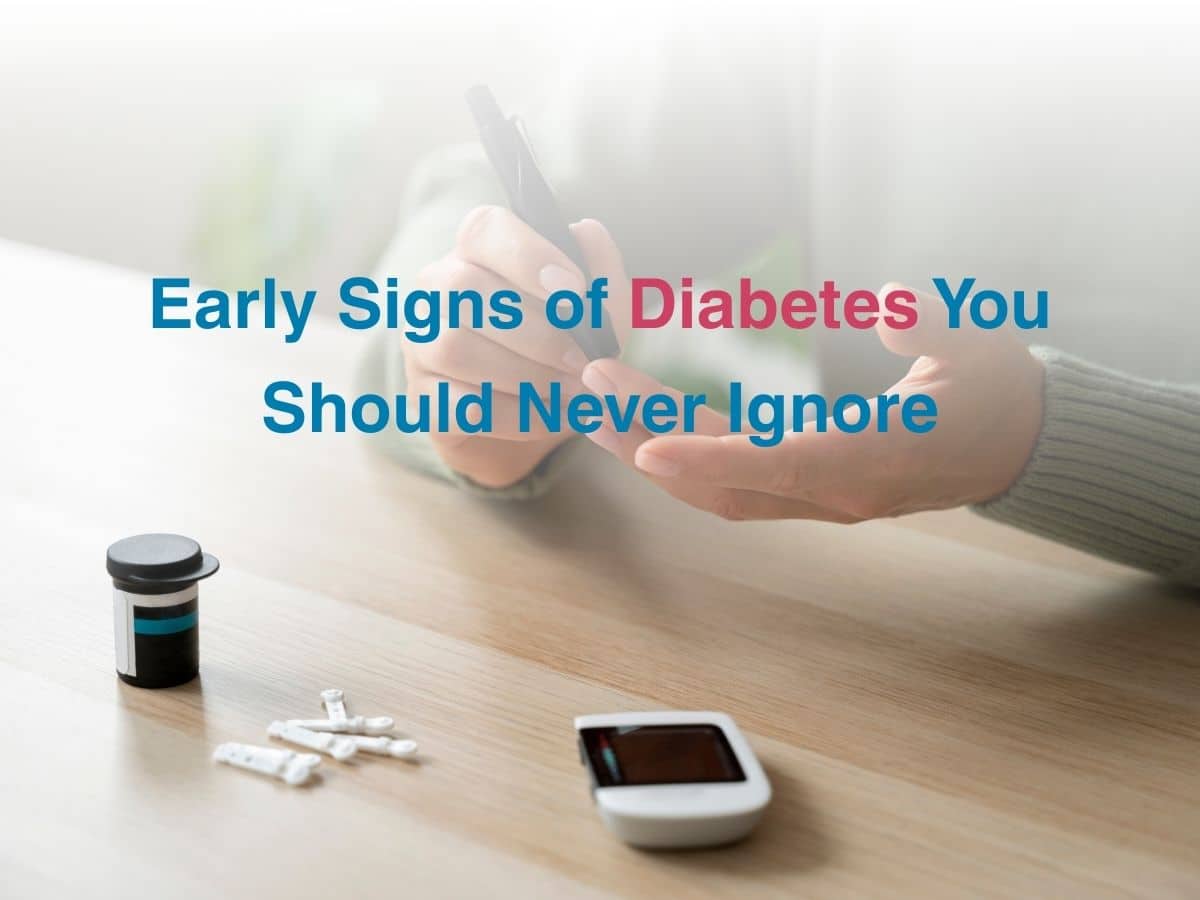
Early Signs Of Diabetes You Should Never Ignore
 Diabetes is most commonly seen across the world and its incidence is higher in the south east Asian countries, especially India, The estimated number of individuals with diabetes in India was 74 million in 2021, but a recent survey reported a much higher number- 212 million, which is dangerously alarming! Diabetes has discreetly become a major epidemic in Indian households affecting the younger generations too.
Diabetes is most commonly seen across the world and its incidence is higher in the south east Asian countries, especially India, The estimated number of individuals with diabetes in India was 74 million in 2021, but a recent survey reported a much higher number- 212 million, which is dangerously alarming! Diabetes has discreetly become a major epidemic in Indian households affecting the younger generations too.
Common Diabetic Symptoms In Adults
Some common diabetic symptoms’ we observe in the majority of the population are excessive thirst, unexplained tiredness, excessive hunger and frequent urination sometimes associated with a burning sensation in the urinary tract. In certain individuals, we also see tingling in hands and feet.
Other notable symptoms include:
- Losing weight without trying.
- Feeling tired and weak.
- Feeling irritable or having other mood changes.
- Having blurry vision.
- Having slow-healing sores.
- Getting a lot of infections, such as gum, skin and vaginal infections.
How To Know If You’re Pre-Diabetic?
This type is the stage before Type 2 diabetes. Your blood glucose levels are higher than normal but not high enough to be officially diagnosed with Type-2 diabetes. Pre-diabetes usually has no signs or symptoms as such, but if a regular health check up shows elevated sugar levels without any sign or symptoms then you’re at a risk of type 2 diabetes mellitus.
Sometimes a strong family history of diabetes can also help in tracing your blood sugar status.
One possible sign of pre-diabetes is darkened skin on certain parts of the body. Affected areas can include the neck, armpits and groin.
What are the major risk factors and causes of diabetes?
These risk factors are very well known by most of us, but we ignore them because we think they don’t matter much.
- Being over-weight or obese.
- Alcoholism and smoking
- Unhealthy lifestyle in eating and drinking
- Age factor being 45 or older.
- Strong family history with type 2 diabetes.
- Being less physically active
- Sometimes diabetes is diagnosed during pregnancy, also known as gestational diabetes.
Too much glucose circulation in the body due to these causes can lead to diabetes but the reason for the higher levels of glucose in the body can differ with types of diabetes.
1. Insulin resistance
the most common type of diabetes mellitus or type 2 diabetes.
2. Autoimmune disease
type 1 diabetes happens when your immune system attacks the insulin-producing cells in your pancreas.
3. Hormonal causes
during pregnancy, the placental hormones cause insulin resistance causing gestational diabetes. Other hormone related conditions like acromegaly and Cushing’s syndrome also cause diabetes.
4. Pancreatic damage
physical damages to pancreas due to injury, surgery or alcoholism can impact its ability to produce insulin in controlling the blood sugar leading to type 3c diabetes.
5. Genetic mutations
certain genetic mutations can lead to neonatal diabetes.
Cases with high risk factors of getting diabetes can track their blood sugar levels regularly by undertaking these diabetic blood profiles like:
- Random blood sugar
- Fasting and post-prandial blood sugar tests at regular intervals which are primary and basic blood tests in confirming if you’re pre-diabetic or diabetic.
Furthermore, specific blood tests like HbA1C, oral glucose tolerance and random plasma glucose test can help in confirming the severity and prognosis of the condition.
Complications On Neglecting The Early Signs Of Diabetes-
Untreated or neglected diabetes can lead to severe complications like damage to the nerves causing neuropathies, damage to the eyes and vision causing retinopathies, renal failures, heart failures, slow wound healings and infections, even severe keto-acidosis leading to death.
Conclusion
Populations’ with high risk factors such as obesity, genetic tendencies etc; tend to be pre-diabetic and asymptomatic with high blood sugar and glucose levels. Hence, regular blood checkups with an emphasis on a healthy lifestyle and associated dietary habits can help in controlling blood glucose levels. If you have already been diagnosed with diabetes, know that early intervention can prevent further complications.






